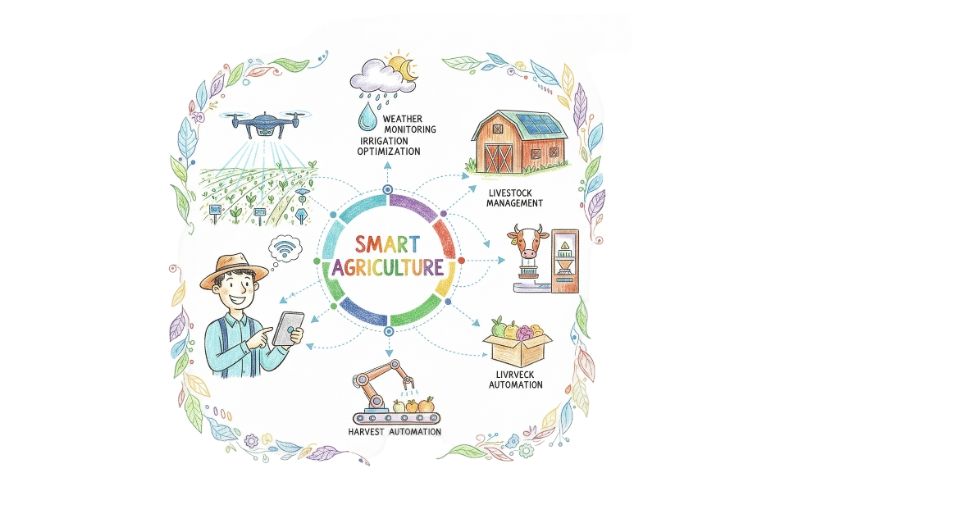
Sep 11, 2025

The newly submitted Global Smart Agriculture Market Report by Metastat Insight puts forth a comprehensive examination of how technology continues to reshape conventional agricultural systems into cutting-edge, data-centric webs of production. The report shows the increasing sophistication of agriculture techniques that are no longer limited by the old ways but are now augmented through digital infrastructure, automation, and precision-based technologies. With this transition, agriculture is brought nearer to a system in which decision-making comes in sync with conclusions drawn from sophisticated monitoring equipment and networked platforms.
The Global smart agriculture market is an ongoing dialogue between technology and farming that is forging a new agricultural ecosystem in which production is optimized by connectivity and adaptive management. In this revolution, fields are not only fields of cultivation but also centers of digital interaction where sensors, drones, and automatic platforms meet to facilitate operations. Fields that previously depended solely on eye observation now combine with layers of satellite imaging, soil mapping, and predictive algorithms, transforming past disparate practices into unbroken cycles of information exchange.
Sustainability has likewise become a central characteristic of this market, not in the realm of theoretical thought but as a quantifiable result integrated into everyday practice. Technologies on the global smart agriculture market enable effective utilization of water resources, reduced fertilizer application, and strategic use of crop protection. This evolution does not merely protect yield but boosts soil health and saves neighbouring ecosystems. Producers who embrace these systems are able to monitor input usage in real time, minimizing waste and reinforcing long-term performance. The result is a cycle wherein efficiency meets ecological responsibility.
Another characteristic of this sector is interconnectivity that goes beyond fields and greenhouses into supply chains and markets to consumers. Intelligent agriculture platforms provide visibility from seed to distribution channels, establishing transparency and traceability. These frameworks cut down uncertainty in trade flows and provide quantifiable reassurance for buyers and regulators. A digital trail tracking produce through stages also serves to synchronize farm results with compliance norms and consumer aspirations. Therefore, the worldwide smart agriculture market provides a setting wherein accountability is no longer an outside requirement but a part of the production function.
Investment in this sector increasingly demonstrates faith in its ability to redefine food production. New ventures construct infrastructure on farm robotics, climate-resilient solutions, and platforms supported by artificial intelligence. Traditional agricultural businesses, on the other hand, are streamlining existing processes with improvements in irrigation automatization, greenhouse climate management, and cattle tracking. The intersection of start-up innovation and institutional uptake generates a dynamic interaction that drives this sector into wider visibility throughout international landscapes.
The use of smart agriculture also has an impact on rural economies and labour patterns. Whereas conventional farming called for manual intensity, smart platforms promote the acquisition of skills in data interpretation, system management, and digital handling. The groups that previously depended only on manual labour are now incorporating technical skills, thus diversifying occupation prospects. Training and education in this area create new avenues for the next generation, ensuring that agriculture remains viable and appealing despite continuing urban migration patterns globally.
Resilience to changing environmental trends is another high-impact outcome. Agriculture has long been at risk from fluctuating climates, but intelligent solutions offer methods for improved forecasting, adaptive planning, and backup management. Satellite imagery with on-farm sensors enables farms to forecast weather trends and prepare for interventions prior to loss. These are high-leverage activities that lift agriculture out of reactive measures and transform it into proactive approach, providing more stability in supply chains.
Metastat Insight analysis demonstrates not merely an array of technologies but a trend transforming food security, sustainability, and rural development. The report ensnaps an industry in transformation, where innovations hitherto the purview of pilot programs are increasingly being applied across the board. These solutions span varied geographies, innovating for local crops, climates, and cultural practices yet still conforming to a single principle of efficiency through intelligence.
The story of the global smart agriculture market highlights how farmscapes are transforming into integrated systems which harmonize production with ecological awareness. The place of digital surveillance and auto-solutions repositions farming from standalone operations to coordinated webs of choice-making. Aside from the direct advantages of yield increase and resource optimization, the general value will be in creating models of farming which are robust, open, and friendly to global sustainability agendas.
As agriculture in its development moves from historic methods to new, digital-based systems, the insights contained in the Global Smart Agriculture Market Report issued by Metastat Insight provide a useful perspective for seeing the scope and size of this change. What results is not simply an improved system of agricultural production but also an expanded model for environmental stewardship, economic participation, and technological growth that collectively shape the future of global agriculture.
Drop us an email at:
Call us on:
+1 214 613 5758
+91 73850 57479